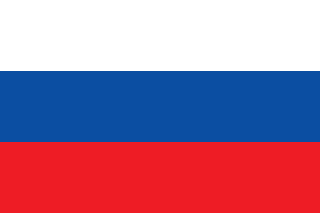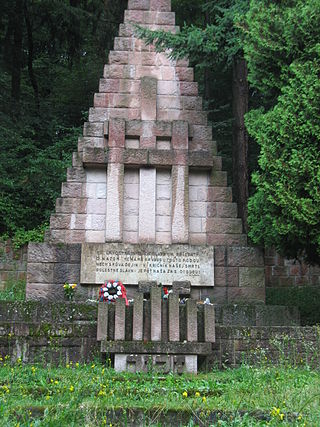Related Research Articles

The (First) Slovak Republic, otherwise known as the Slovak State, was a partially-recognized client state of Nazi Germany which existed between 14 March 1939 and 4 April 1945 after abandoning Czechoslovakia to be annexed by Germany. The Slovak part of Czechoslovakia declared independence with German support one day before the German occupation of Bohemia and Moravia. The Slovak Republic controlled the majority of the territory of present-day Slovakia but without its current southern parts, which were ceded by Czechoslovakia to Hungary in 1938. It was the first time in history that Slovakia had been a formally independent state.

The history of the Jews in Slovakia goes back to the 11th century, when the first Jews settled in the area.

Ferdinand Ďurčanský was a Slovak nationalist leader who for a time served with as a minister in the government of the Axis-aligned Slovak State in 1939 and 1940. He was known for spreading virulent antisemitic propaganda, although he left the government before the Holocaust in Slovakia was fully implemented. After the war, he joined the Gehlen Organization.

Ivan Kamenec is a Slovak historian.
Milan Stanislav Ďurica is a Slovak historian and theologian.
Benjamin Frommer is an American historian, focused on history of Central Europe in 20th century. His work has concerns topics of genocide and ethnic cleansing, collaboration and resistance, transitional justice, and Central/Eastern European nationalism. Much of his work focuses on The Protectorate of Bohemia and Moravia. He is currently the Charles Deering McCormick Professor and was formerly the Wayne V. Jones Research Professor of History at Northwestern University. He is fluent in Czech, French, German, and Slovak and has reading knowledge of Russian.
Prague German was the dialect of German spoken in Prague in what is now the Czech Republic. The written form of this dialect from the Luxembourg rule played an important role in the history of the German language for its balancing function between the written upper Austrian and southern German dialects and eastern Central dialects of central Germany, which later developed the spelling of Modern German writing.

The Working Group was an underground Jewish organization in the Axis-aligned Slovak State during World War II. Led by Gisi Fleischmann and Rabbi Michael Dov Weissmandl, the Working Group rescued Jews from the Holocaust by gathering and disseminating information on the Holocaust in Poland, bribing and negotiating with German and Slovak officials, and smuggling valuables to Jews deported to Poland.

The Holocaust in Slovakia was the systematic dispossession, deportation, and murder of Jews in the Slovak State, a client state of Nazi Germany, during World War II. Out of 89,000 Jews in the country in 1940, an estimated 69,000 were murdered in the Holocaust.

The Ústredňa Židov was the Judenrat in Bratislava that was imposed on the Jewish community of the Axis-aligned state of Slovakia to implement Nazi orders during the Holocaust. It was formed on the advice of SS (Schutzstaffel) official Dieter Wisliceny; the first leader, Heinrich Schwartz, was removed after refusing to cooperate with Nazi demands and replaced by the ineffectual Arpad Sebestyen. The collaborationist Department of Special Affairs run by Karol Hochberg aided the authorities in confiscating Jewish property and collecting information that was used to arrest and deport Jews. Nevertheless, most of the ÚŽ members focused on providing opportunities for emigration and improving the social welfare of Jews remaining in Slovakia, although they were hampered by the dwindling resources of the community. In addition, the ÚŽ attempted to resist deportation by bribing Slovak officials, retraining Jews who had been expelled from their previous profession, and improving and expanding labor camps for Jews in Slovakia. The underground resistance organization that ran under its auspices, the Working Group, took over the ÚŽ leadership in December 1943. Since its formation in early 1942, the Working Group had used the ÚŽ as cover for its illegal rescue activities. After the German invasion of Slovakia in August 1944, the ÚŽ was disbanded and many of its members were arrested and deported to concentration camps.

The Kremnička and Nemecká massacres were a series of massacres committed between 5 November 1944 and 19 February 1945 in Kremnička and Nemecká, Slovakia by the Hlinka Guard Emergency Divisions and Einsatzkommando 14 following the suppression of the Slovak National Uprising. During the uprising, many Jews fled to Banská Bystrica, a partisan stronghold; when the town fell, Jews, actual or suspected Slovak partisans, and Romani people captured during roundups were temporarily held in the town's jail. The victims were then trucked to the murder sites at Kremnička and Nemecká, where they were shot. The majority of the 747 people shot at Kremnička were Jewish. Exact figures are not known for the Nemecká massacres, because the bodies were burned, but historians estimate a death toll of around 900, of whom most of the known victims were Jewish or Romani.
Einsatzgruppe H was one of the Einsatzgruppen, the paramilitary death squads of Nazi Germany. A special task force of more than 700 soldiers, it was created at the end of August 1944 to deport or murder the remaining Jews in Slovakia following the German suppression of the Slovak National Uprising. During its seven-month existence, Einsatzgruppe H collaborated closely with the Hlinka Guard Emergency Divisions and arrested 18,937 people, of whom at least 2,257 were murdered; thousands of others were deported to Nazi concentration camps. The victims included Jews, Romani people, actual or suspected Slovak partisans, and real or perceived political opponents. One of its component units, Einsatzkommando 14, committed the two of the largest massacres in the history of Slovakia, at Kremnička and Nemecká.
Tibor Kováč (1905–1952) was an activist in the illegal Working Group resistance organization during the Holocaust in Slovakia; he also worked for the welfare department of the Ústredňa Židov (ÚŽ), the Judenrat in the Slovak State.
Edith Saurer was an Austrian historian, university professor at the University of Vienna, scientific author, and publisher. She is regarded as a central cofounder and advocate of feminist historiography in Austria. She received the Käthe Leichter Prize, Gabriele Possanner State Prize, and the Golden Medal for her services to the State of Vienna.

The Salzburg Conference was a conference between Nazi Germany and the Slovak State, held on 28 July 1940, in Salzburg, Reichsgau Ostmark. The Germans demanded the expulsion of the Nástup faction of the Slovak People's Party from the Slovak government because of its independent foreign policy, threatening to unilaterally revoke the protection guarantees that Slovakia had obtained in the 1939 German–Slovak treaty.
Persecution of Czechs occurred throughout the existence of the Slovak State (1939–1945).

Ján Vojtaššák was a Roman Catholic bishop of the Diocese of Spiš. He was imprisoned by the communist regime in Czechoslovakia in 1951. A case for his beatification is ongoing but has attracted opposition due to his complicity in the Holocaust in Slovakia.

The Holocaust in Bohemia and Moravia: Czech Initiatives, German Policies, Jewish Responses is a book by the German historian Wolf Gruner on the Holocaust in Bohemia and Moravia, the Czech-majority parts of Czechoslovakia partially annexed into Nazi Germany during the German occupation of Czechoslovakia. Beginning before the Munich Agreement, Gruner's book covers the various stages of persecution of Jews which led to their deportation and murder. He argues that the role of Czech collaboration and local initiatives was greater than has been conventionally assumed, and also that Jewish resistance to persecution was substantial. The book has received mixed reviews; some Czech historians have disagreed with Gruner's conclusions while other reviewers generally praised the book with some reservations. The book was published in German in 2016 and in English and Czech in 2019. It received the 2017 Sybil Halpern Milton Memorial Book Prize of the German Studies Association.
Ladislav Lipscher (1915–1990) was a Slovak historian and defector from Communist Czechoslovakia. Lipscher did much of his research before his defection, allowing him to base his works on then-inaccessible archives locked behind the Iron Curtain.
References
- ↑ Paulovičová 2013, pp. 558–559.
- 1 2 Kamenec 2007, p. 8.
- 1 2 Ward 2013, p. 269.
- ↑ Jelinek 1981, p. 175.
- ↑ Paulovičová 2013, p. 559.
Bibliography
- Jelinek, Yeshayahu (1981). "Ladislav Lipscher. Die Juden im slowakischen Staat, 1939–1945. (Veröffentlichungen des Collegium Carolinum, number 35.) Munich: R. Oldenbourg Verlag. 1980. Pp. 210". The American Historical Review. 86 (1): 175. doi:10.1086/ahr/86.1.175. ISSN 0002-8762.
- Kamenec, Ivan (2007). On the Trail of Tragedy: The Holocaust in Slovakia. Translated by Styan, Martin. Bratislava: Hajko & Hajková. ISBN 9788088700685.
- Nedelsky, Nadya (2016). ""The Struggle for the Memory of the Nation": Post-Communist Slovakia and its World War II Past". Human Rights Quarterly. 38 (4): 969–992. doi:10.1353/hrq.2016.0053. S2CID 151419238.
- Paulovičová, Nina (2013). "The "Unmasterable Past"? The Reception of the Holocaust in Postcommunist Slovakia.". In Himka, John-Paul; Michlic, Joanna Beata (eds.). Bringing the Dark Past to Light. The Reception of the Holocaust in Postcommunist Europe. University of Nebraska Press. pp. 549–590. ISBN 978-0-8032-2544-2.
- Ward, James Mace (2013). Priest, Politician, Collaborator: Jozef Tiso and the Making of Fascist Slovakia. Ithaka: Cornell University Press. ISBN 978-0-8014-6812-4.